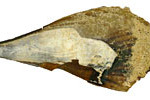
Lobsters, like shrimps and crabs, are decapods – literally meaning 10 legs – and can be found in all of the world’s tropical and sub-tropical seas as well as more temperate waters. They are predatory, nocturnal animals with a vividly decorated coat. They are often numerous locally; they linger in crevices (with their long antennae sticking out) during the day and hunt small benthic organisms at night, but they also feed on organic detritus whenever they happen across it. As with all crustaceans, the lobster moults or sheds its shell to grow.
Lobsters have recently suffered a dramatic demographic decline; intensive fishing has annihilated entire populations, especially where tourism abounds.
The lobster families that you may encounter are the spiny rock lobsters, Palinuridae and the slipper lobsters, Scyllaridae. The true reef lobsters,Nephropidae, with their enlarged pincers (chelae) on the first pair of legs, are not found in the southern hemisphere.
Commonly known as crayfish, New Zealand has two common forms of rock lobster, the green or packhorse lobster, also known as theeastern rock lobster (Jasus verreauxi) and the red or spiny rock lobster (Jasus edwardsii), also known as the southern rock lobster.
The packhorse is the world’s largest rock lobster and can be found in holes and crevices around rocky areas and reefs. They have a green body and brownish-orange legs. The Maori name for the packhorse lobster is ‘pawharu’
Red rock lobsters are generally smaller and are widespread around New Zealand, especially in rocky coastal areas where there are plenty of places to shelter. They are most often found in groups, hiding in crevices and around reefs. The Maori name for the red lobster is ‘koura’.
In addition, you may be fortunate to see the slipper lobster, Scyllaridae. Their antennae have evolved into thin, rounded plates, extending in front of a flattened body. They have no long spines or pincers, but instead depend on camouflage and armour for protection. They blend in well with the hard substrate upon which they are often found. By day they hide in caves and crevices and forage at night. The Spanish lobster(Ibacus peronii) is dull reddish and it can grow up to 23cm. The animal’s flat shape enables it to partly bury in the exposed soft sediments where it lives.
Please record all sightings of lobsters, identifying individual species where possible.








Social Profiles